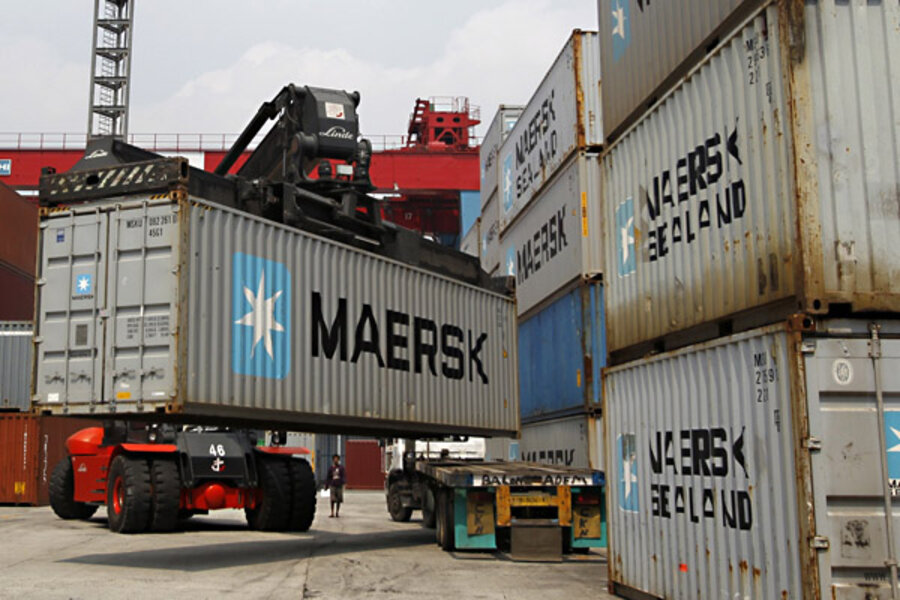Beijing flexes some muscle to protect energy interests
Loading...
Beijing is flexing some more muscle to protect its energy interests in the South China Sea.
Last week, China began combat-ready patrols in the waters around the potentially resource rich Spratly Islands that both China and Vietnam have disputed claims to. And on Friday, China Daily reported that Beijing may develop a military presence in Sansha – a newly incorporated city located on one of the disputed Paracel Islands that was stood up to administer Chinese authority over the country’s South China Sea territories. (The city was established in response to a recent Vietnamese law that claimed sovereignty over the Paracel and Spratly Islands.)
The deployment of combat-ready patrols and discussions of developing forces at Sansha comes on the heels of an announcement from the China National Offshore Oil Company (CNOOC) that it will accept bits from foreign energy companies to explore and develop nine new blocs of the South China Sea that fall within Vietnam’s 200-nautcial mile Exclusive Economic Zone. (See the map here.) It is unlikely, though, that foreign energy companies will cooperate with CNOOC in these disputed blocs given the amount of risk the companies would have to assume in operating there. Regardless, Beijing is putting itself in a better position to protect its energy interests: “the announcement of these blocks reflects another step in China’s effort to strengthen its jurisdiction over these waters,” according to MIT Professor M. Taylor Fravel.
Making a Play for Resources
This recent activity joins a string of other incidents by China to protect its claims to the region’s potential hydrocarbon resources. Estimates of oil and natural gas in the South China Sea vary widely, from U.S. estimates of 28 billion barrels of oil to Chinese estimates of 213 billion barrels of oil. Yet no country knows what really lies beneath the seabed. Officials in Beijing appear to be placing bets that the South China Sea could turn out to be a “second Persian Gulf,” driving up strategic competition over potentially energy rich territory. But for years, efforts to conduct surveys to produce better measurements of the region’s resources have been impeded by Chinese vessels obstructing survey ships and others conducting seismic measurements.
China’s gamble in the South China Sea is in part driven by its strategic vulnerability over assured access to petroleum resources elsewhere. Approximately 80 percent of its imported petroleum comes from the Middle East and Africa, traveling through the narrow Strait of Malacca, a choke point wedged between Indonesia and Malaysia that carries risks of closure or disruption. Meanwhile, China’s vast infrastructure of overland energy pipelines from Central Asia carries risks, shipping petroleum across unstable transit states like Pakistan and Burma and delivering it to western China where Beijing’s influence is sometimes tenuous. These vulnerabilities contribute to China’s assertive behavior in the South China Sea, where officials in Beijing appear to believe they can secure access to potentially large hydrocarbon reserves, even if China does not have internationally recognized claims to the region’s resources.
More Than Mere Symbolism
Although some see China’s recent activity as mostly symbolic, it is important not to underestimate the practical benefits that combat patrols and a PLA Navy station or some other military presence at Sansha could provide Beijing in the future.
In time, China may not need to cooperate with foreign energy companies to explore and develop blocs in the South China Sea, including the contested areas. To date, China’s offshore oil drilling activities have been encumbered by the lack of technological capability to drill in waters deeper than 300 meters. But that is changing: In May, CNOOC began operating its first-ever deep-water drilling rig that will allow China to drill to depths of between 10,000 and 12,000 meters, which may encourage unilateral drilling in contested areas of the South China Sea.
China’s technological breakthrough in deepwater offshore drilling (though still untested) could raise the stakes for other countries in the region worried that China will exploit the region’s resources first. This could potentially increase the number of attempts by others to obstruct offshore oil and natural gas drilling activities. China’s combat-ready patrols and other military assets could help protect those operations from sabotage, consolidating China’s control over South China Sea energy resources. In that light, China’s recent moves could be more practical than observers let on. And officials in Beijing may be planning for it.







